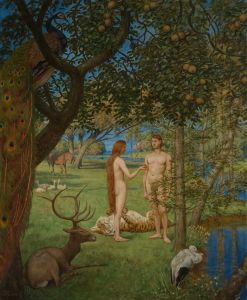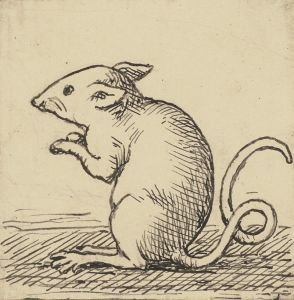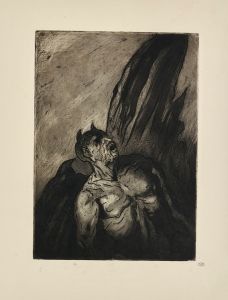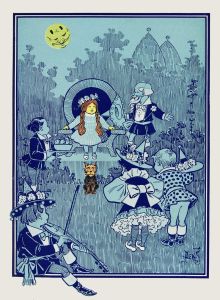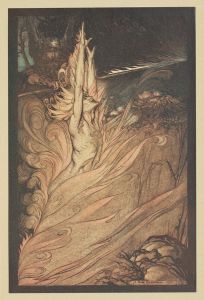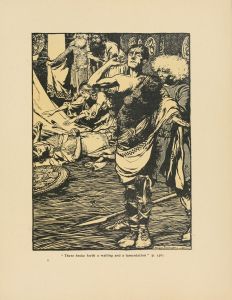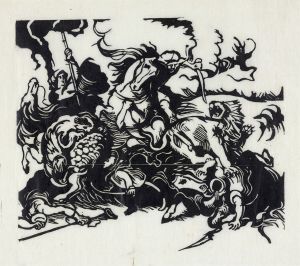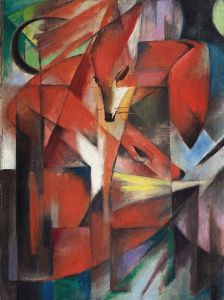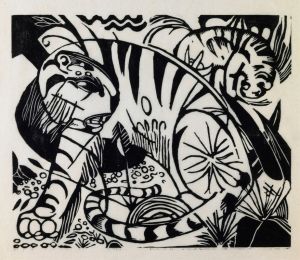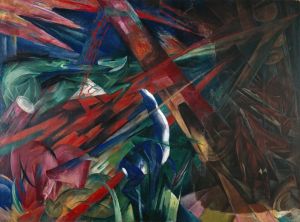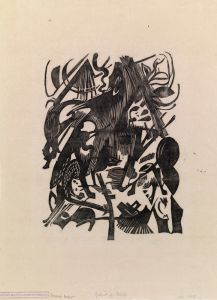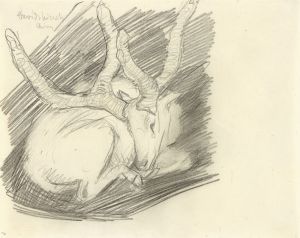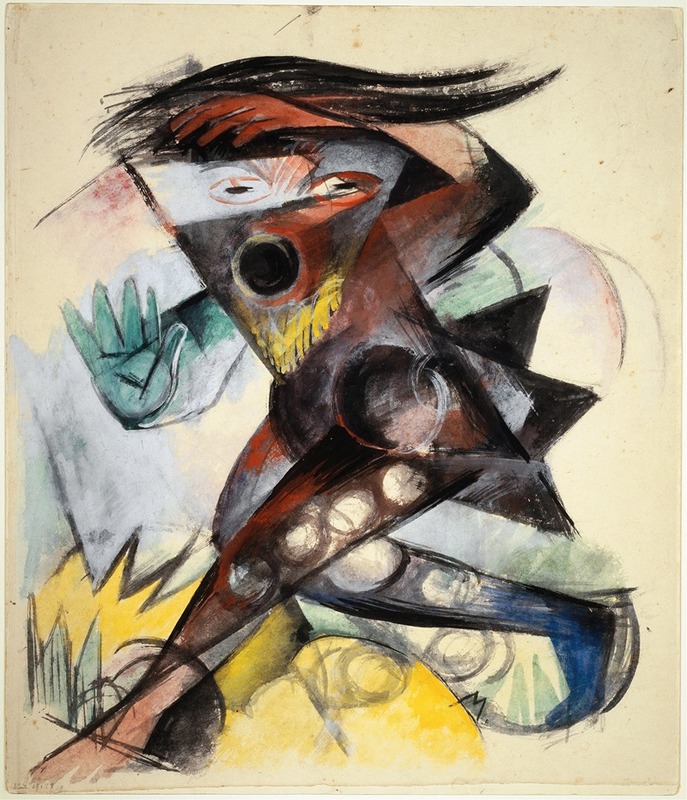
Caliban
A hand-painted replica of Franz Marc’s masterpiece Caliban, meticulously crafted by professional artists to capture the true essence of the original. Each piece is created with museum-quality canvas and rare mineral pigments, carefully painted by experienced artists with delicate brushstrokes and rich, layered colors to perfectly recreate the texture of the original artwork. Unlike machine-printed reproductions, this hand-painted version brings the painting to life, infused with the artist’s emotions and skill in every stroke. Whether for personal collection or home decoration, it instantly elevates the artistic atmosphere of any space.
Franz Marc was a German painter and printmaker, and one of the key figures of the German Expressionist movement. He was born on February 8, 1880, in Munich, Germany, and his work is known for its vibrant use of color and its focus on animals, which he believed to possess a spiritual quality that was often lacking in humans. Marc co-founded the art group Der Blaue Reiter (The Blue Rider) along with Wassily Kandinsky, which played a significant role in the development of modern art in the early 20th century.
One of Franz Marc's notable works is "Caliban," created in 1914. This painting is part of his later period, during which his style evolved to become more abstract and fragmented, influenced by the onset of World War I and his exposure to Futurism and Cubism. "Caliban" reflects Marc's interest in the natural world and his philosophical beliefs about the interconnectedness of life.
The title "Caliban" refers to a character from William Shakespeare's play "The Tempest." Caliban is a complex figure, often depicted as a savage and deformed slave, representing the untamed and primal aspects of nature. Marc's choice of this title suggests a deeper exploration of the themes of nature, civilization, and the inherent wildness within both.
In "Caliban," Marc employs a dynamic composition filled with bold, intersecting lines and vibrant colors. The painting features a chaotic yet harmonious arrangement of shapes and forms, which can be interpreted as an abstract representation of an animal or a natural scene. The use of color is particularly striking, with bright blues, reds, and yellows creating a sense of energy and movement. This use of color and form is characteristic of Marc's later works, where he sought to convey the spiritual essence of his subjects through abstraction.
Franz Marc's work, including "Caliban," was deeply influenced by his philosophical and spiritual beliefs. He was interested in the idea of a universal harmony that could be found in nature, and he often depicted animals as symbols of purity and innocence. Marc believed that animals were closer to this universal harmony than humans, who had become corrupted by modern civilization. This belief is evident in "Caliban," where the abstract forms and vibrant colors suggest a world that is both chaotic and harmonious, reflecting the dual nature of existence.
Tragically, Franz Marc's life and career were cut short by World War I. He was drafted into the German army in 1914, the same year he painted "Caliban," and he was killed in action on March 4, 1916, at the age of 36. Despite his short career, Marc left a lasting impact on the art world, and his works continue to be celebrated for their innovative use of color and form, as well as their deep philosophical and spiritual underpinnings.
"Caliban" remains an important example of Franz Marc's later work, showcasing his transition towards abstraction and his continued exploration of the themes of nature and spirituality. The painting is a testament to Marc's unique vision and his ability to convey complex ideas through his art.






